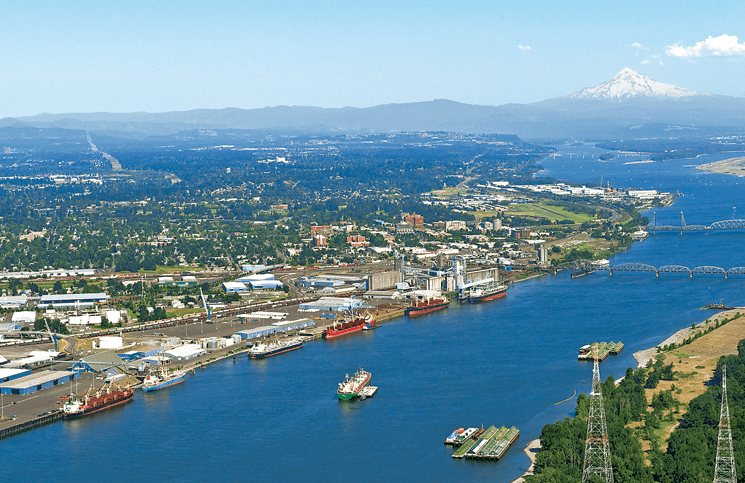For as long as there have been settlers in this region, the mighty Columbia River has fueled commerce. During the 1800s it was the fur trade, followed by the rise of the timber industry. In the 1930s, the construction of dams by the federal government led to new types of industrial and economic production.
Today, the Columbia River continues to drive economic opportunity. In the past five years alone, public and private investments along the river have totaled more than $1 billion, according to a June study from the Pacific Northwest Waterways Association. Where these investments are taking place is no secret: port districts.
In Southwest Washington, seven public port districts are active in many different areas of economic development – some tied to river commerce more than others. In Cowlitz County, this includes the Port of Longview, the Port of Woodland and the Port of Kalama; in Clark County, the Port of Ridgefield, the Port of Vancouver and the Port of Camas-Washougal; and to the east, the Port of Skamania County.
The next four editions of the Vancouver Business Journal will examine the economic impact that each of these ports has on the region and in the communities they operate in.
Public-private entities
Prior to examining each of the region’s ports on an individual level, it is important to understand how public port districts operate.
As the Washington Public Ports Association (WPPA) explains it, port districts are uniquely capable of creating economic growth and increasing the number of family-wage jobs in a community because of specific authorities granted to them by the Legislature. This includes the authority to develop terminals for handling cargo; to buy and improve pieces of property for lease (or to sometimes sell) to a private industry; and to provide environmental enhancement, protection and public access.
Because ports are guided by locally-elected port commissioners, they’re able to meet the specific economic development needs of their communities. And, according to the WPPA, because they’re financially independent of state government and other local governments, they’re able to respond rapidly to the needs of existing and prospective customers.
“Because ports are a public-private entity, they also have a natural ability to partner with groups,” noted Derrick Olsen, VP of regional strategy for Greater Portland Inc. “Whether it’s on something like the current waterfront redevelopment that the Port of Vancouver is doing in partnership with the city, or the work the Port of Camas-Washougal is doing, [ports] see the importance of making those investments for the long-term – not only for their business lines, but also the communities they’re chartered to support.”
Mike Bomar, president of the Columbia River Economic Development Council, said that in his organization’s work with ports, they are key players when it comes to projects that require the combination of public and private resources to put a deal together.
“Ports are able to focus particularly on the traded sector, looking at exports and imports and the multiplier effect those have on an economy,” he said.
The ripple effect
Both Olsen and Bomar agreed that for much of the general population (members of the business community included) there is a lack of understanding when it comes to the broad impact that ports in this region have on the economy; they said it is too easy to focus in on one particular issue, missing the bigger picture.
“For your average person who is working on their day-to-day life, the economic impact ports have isn’t something they have the luxury to focus on,” said Olsen. “Even when they do, the multiplier effect of traded sector industries, which is what the ports focus on, is hard to see because it’s not necessarily immediately visible.”
Added Bomar, “Much of a port’s business doesn’t necessarily impact someone the same way a parks project or a street project would. It’s more those multiplier, economic impacts that are harder to really feel if an average citizen is not tuned in to that port business.”
Olsen said another way that ports impact the economy that is often overlooked is in their handling of the industrial land they hold.
“Especially in the metro area where there is often discussions about where available land is and how it can be used, ports can play a positive role when it comes to investing in land and keeping it available for industrial purposes,” he said. “Ports in Southwest Washington hold industrial land that is available for potential high-value employment uses. I think that’s an important role that sometimes the general public doesn’t necessarily know about, but it is increasingly important.”
How are the ports in Cowlitz County investing in land? What industrial projects will bring new jobs to the region while stimulating the economy? That is the focus of our next “Ports of Progress” article. Look for it in the August 28, 2015 edition of the Vancouver Business Journal.









